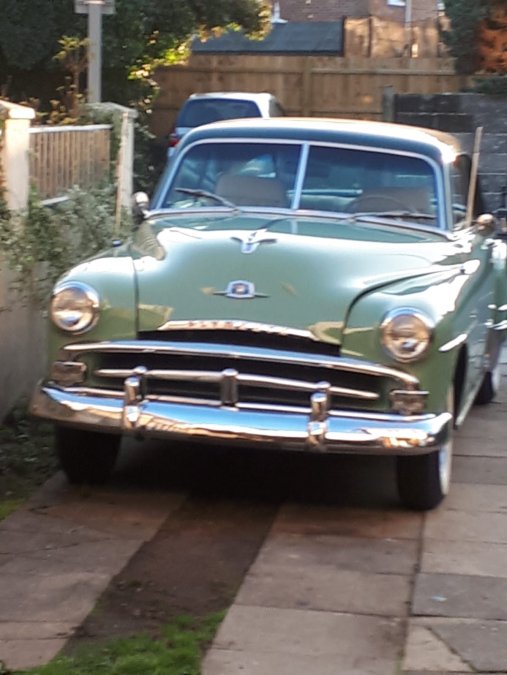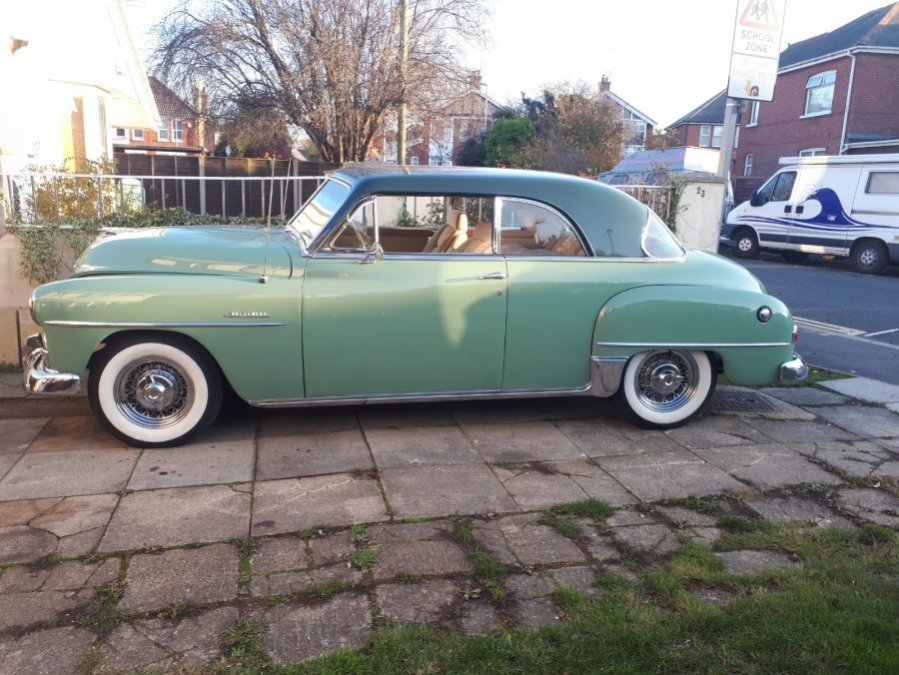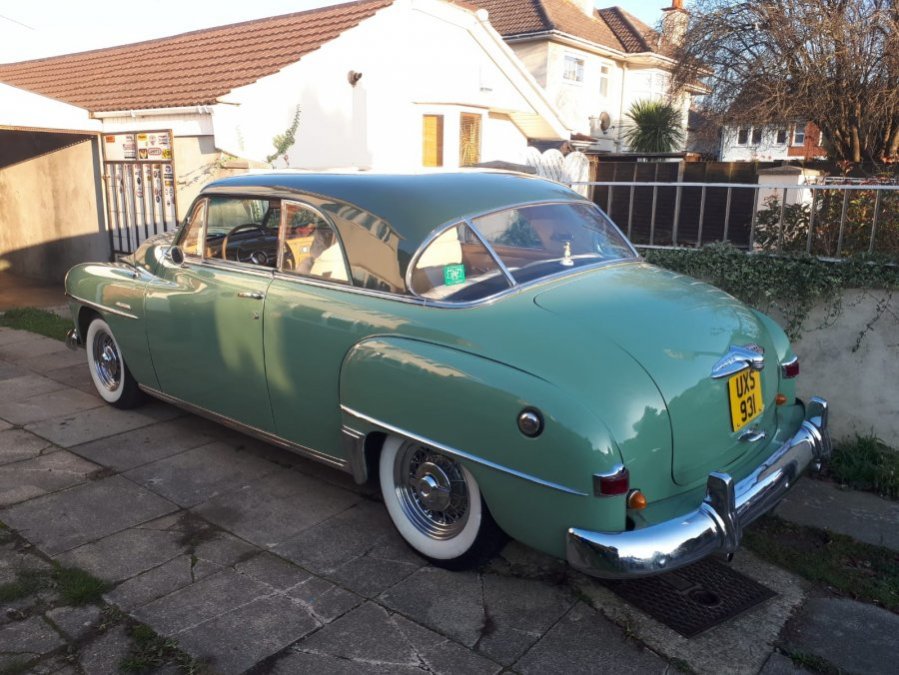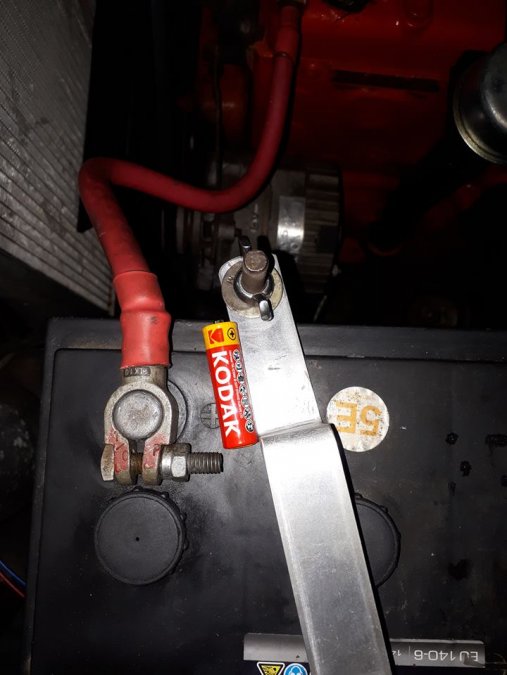
Raindance654
Members-
Posts
24 -
Joined
-
Last visited
Content Type
Links Directory
Profiles
Articles
Forums
Downloads
Store
Gallery
Blogs
Events
Everything posted by Raindance654
-
No idea. I wondered that myself. I took it to a specialist near me as it was running slow even on the bench and the bendix gear didn't seem to sit right on the shaft. The guy in the shop told me there was a problem with the Bendix but the insides of the motor were fine. It came back working better. For the minimal cost involved, whatever was up with it, I'm quite happy to take that as a win.
-
Yes. The starter pinion was apparently dragging and causing the motor to run a little slow. I added the battery since I was also not confidant that the original battery was up to scratch, even though it didn't seem too bad when tested. I added the extra big battery cables just for some cheap insurance.
-
UPDATE.............got the starter looked at and fitted new battery (OPtima) and huge battery cables (100mm sq). Starts first hit of the button now. Yayyyyy.................!!
-
Hi 9ft box. That's exactly what I did. I've since been to the tech tips page and have read it thoroughly, which I recommend to any newbie. Thanks.
-
Thanks for that. I did click the tech tab......and found thousands of threads. The sheer number struck a little torror into me as I'm not sure how I would have found what I was looking for...........lol
-
I did drop test (load test)the battery after a full charge with the correct apparatus and it showed very little voltage drop but I have had batteries which test ok under a load test but fail to crank satisfactorily...............perhaps the battery is to blame after all............!!!
-
Ok......so my starter might not be shot after all then...............
-
Whilst the starter is off, I'll get it checked properly......but sounds as though my "good" battery could be weak............
-
UPDATE. I just did another amp draw test when I was sure the battery was fully charged. The reading was approx 280 amps but peaked at just over 300 amps. To my mind this is WAY over what it should be drawing. My conclusion is that in spite of the starter being apparently in good shape, something is amiss inside............possibly a short in the windings. Before I spring for an eBay special starter could there be any other possible causes for such a high draw.............?
-
That's a great idea..........but as I'm in England these cars are quite scarce. Although admittedly I've only had my Plymouth for a few days, I'm not aware of any of these or similar cars anywhere near me............................ahh the joys............
-
I like the idea of intimidating my Plymoth into co-operating. In the meantime, I'll do some homework on voltage drop testing and I'll get the starter motor off once again for some more in depth testing and checking. I've learned the hard way in the past that new does not necessarily mean defect free, so I will be checking ALL components very thoroughly, if only as you say, to eliminate them as questionable.
-
Given the remarkable simplicity of the cars and boiling it down to those three things, you wouldn't think there could be such a problem, would you.........?? Of the three, I'd say that I am kinda missing the fuel side of the equation. Although there is plenty of fuel in the carbs and the booster pumps seem to work just fine and give a good jet of fuel when the throttle is opened. No matter how much fuel I tip down the carbs the plugs remain prety much bone dry. so my feeling is that I'm not geting fuel/air mix down to the cylinders. Even under cranking, I'm getting a pretty decent spark and on the occasion that I got three buddies to push start the car down the street, it started quite easily and ran sweetly enough, so even though I didn't physically check the timing at that point, I have to think that the ignition and timing must be in the ballpark.
-
Here are a few more photos of my car, which according to the paperwork that came with her is named "Betsy" . I was originally looking for a slightly later MoPar until I saw this 51. You can see why I fell in love with her, can't you..................?
-
What you say makes perfect sense to me, Plymouthy. It's my next move to go over the whole lot much more closely. This would be in normal circumstance my "go-to", as you say ..........but in this case, it appears that this has already been done as all the cables, wires, etc lok new or almost new. I think that as an ongoing problem, my guess is that multiple persons have been down this and other roads in an attempt to solve this problem. What I have to do is be the one who finds what they didn't.................and this is what I'm hoping you good folks here will be able to help me achieve.
-
This would very likely to be one and the same car................!! It's now with me in Dorset, UK..............right by the sea on England's south coast. The last owner of this car in the USA was Mr Greer. I wonder if he had the same problems with the Plymouth when it was in his care.................?
-
I just measured the cables and there doesn't seem to be any difference in the cable sizes. Perhaps the colors make them appear to be different sizes. The cables used are approx 100sqmm to 110sqmm in size. This equates to something like OO or OOO gauge in AWG terms i believe. I do have a service manual which came with the car along with a lot of other documentation. Whilst the cables all seem to be OK, I plan to supplement them with an additional ground cable of similar size to go directly to a starter bolt and also add a couple more body / frame grounds. Yes, you did spot the 6 volt positive ground alternator, which is of 1 wire variety which I do not like as I personally prefer the 3 wire variety. Could the presence of this alternator be significant, other than being an attempt to keep the battery charge topped up more efficiently..........? Stripping the started revealed no obvious issues with it. In fact it looked like the started had been worked on quite recently as the bushes looked new, as the the brushes, whilst the commutator looked like it had been turned in a lathe. Judging by the condition of the armature and its windings, it's even possible that this had been replaced or refurbed at the same time. I don't think the started has an easy fix problem such as bushes or brushes although if I can't find any other problems with the car, the started may need to be stripped and checke dmore closely for shorts or segment damage. Voltage drop tests didn't reveal any significant drop in the system ........but how much drop is likely to cause a problem with a 6 volt positive setup........? Whilst the coil wire is admittedly quite long, when I check for a spark under cranking, I'm getting a pretty decent one........even with the battery having gotten past its best charge due to previous cranking. I'm in England on the south coast in Dorset county...........not by any means the worst part of the world to live, lol. I'll put up a couple more pics of the car shortly. In the meantime, I'd appreciate it if the thoughts would keep coming, so I can try these one by one.
-
Yes Greg, the engine looks freshly painted to me also. With this in mind, one of the first things that I checked was whether the ground connections were good. So, I removed all attaching bolts, re-cleaned them (even though they were actually pretty good already) and re-attached with new star washers. Whilst I had the starter off, I cleaned the mounting surfaces and mounting bolts. I get the impression that this has been an ongoing problem for some time as everything that I check has already been renewed or refurbed. Spark plugs are new NGK and other components in the ignition look new too. Whilst I'm old enough to remember hand crank starting (we had cars here with hand cranking provision until the late 60's), I feel that the motor is not able to pull any fuel through since even after tipping significant amounts of fuel manually down the carb throat and attempting to crank, the plugs remain bone dry when I'd have thought for sure they would have been drowned by that time. There doesn't seem to be a lack of compression, either........but it's on my list of things to check next. It will also be interesting to see how quickly the engine spins without any plugs fitted. Chokes are manually operated and have no apparent problems with operation. Until I can make this sucker run again I can't check timing but the one time I had this car running after push starting it down the street with the help of three buddies (gosh these cars are heavy, aren't they.....?), it fired easily and ran sweetly enough so I don't envisage any revelations when I check the timing. See what I mean..........?? It's an odd situation with this car..........!
-
Thanks for the welcome. No, the motor does not crank any faster after having been warmed up. It's always agonisingly slow. I haven't had my plymouth long enough to investigate what oil is in the crankcase but the problem does not seem to be noticably temperature sensitive
-
I used an inductive clamp meter to get that reading. Do you think perhaps the windings have a problem.........?
-
This was under load whilst cranking the motor with the plugs in. Admittedly, The battery was still recovering from several attempts to start............
-
Whilst the starter was apart I checked the bushes, which looked like they had been recently replaced. No undue slop, elongation or other imperfections. I forgot to mention that I did an amp test whilst cranking, which came out at about 40 amps. No significant voltage drops either. I removed checked and cleaned all cables and grounds, which all seemed pretty decent anyway, but I went though it all just to be sure. I also cleaned the starter mounting surfaces and bolts, again just to be sure. In addition I have an extra cable in my plans to be fitted direct from the battery to a starter bolt, just as soon as I can get to a truck parts store during the coming week.
-
There seems to be plenty of gas in the carbs, Don. I suspect that getting fuel to the carbs and priming them may not be the biggest problem at the present time. The motor does not seem to spin over fast enough to draw the fuel into the cylinders.
-
The cables look to have been replaced very recently and are pretty big gauge. They look to be OO or OOO gauge. I'm planning to add an extra ground cable of similar size to run direct to a starter bolt, for what good this might do. The photos show my cables and I have included an AA battery cell for comparison of size.
-
I just got a 51 Plymouth Belvedere. It's in great shape and runs fine but it will not start on the key. I realise that this might be an often discussed topic here but I wasn't able to find too much in the tech section to help, so I'm hoping you guys will help a little. The problem centers around the rate at which the starter spins the motor over..........it's just too slow and consequently will not draw any fuel/air mix into the cylinders. I've checked the battery, the grounds, cables and most everything else I can think of. Taking the starter off and disassembly shows no obvious problems internally. Brushes look good, bushes have no undue slop, commutator is in great shape and there does not seem to be any obviously burned or damaged windings. My Plymouth starts easily if I push start it down the street and runs just fine, so I'm reluctant to place blame on igniton or carburation at this stage and therefore my first goal is to get the motor spinning over at a decent enough speed to pull fuel into it. Any of you early Mopar experts have thoughts on how to do this ........? I'd rather not convert to 12 volt if I can avoid it as the car has survived all these years without being messed about with and I'd prefer to keep it that way.








